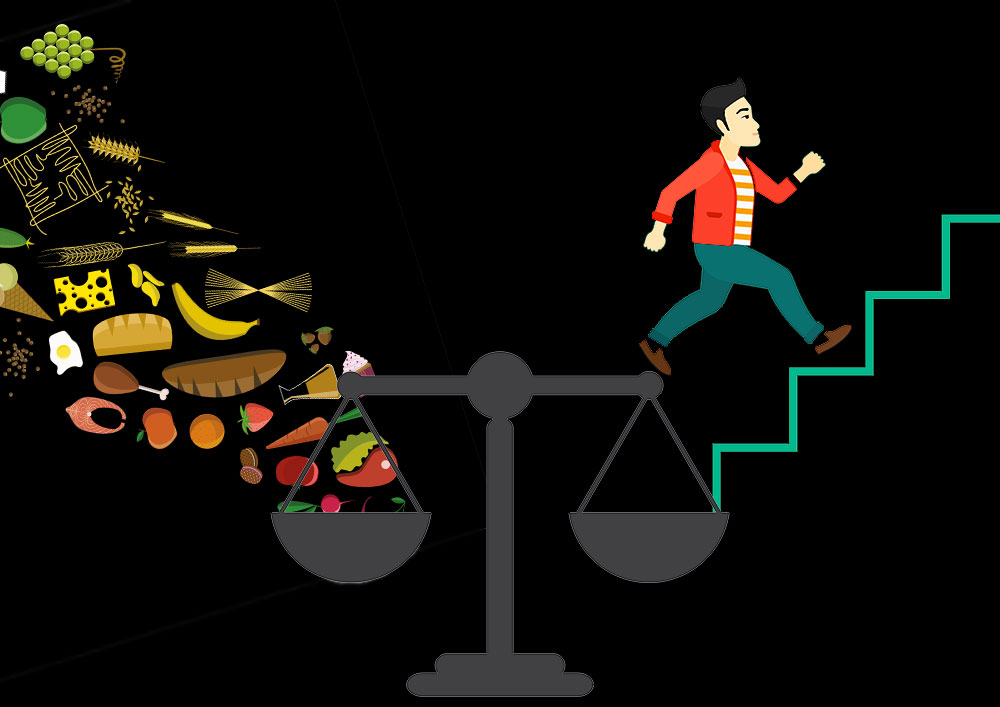Calories vs exercise: the ins and outs of energy
- Overview
If your BMI or body fat percentage is a little high (or low), achieving a healthy weight should be one of your health priorities. But we know this is easier said than done, often because we misjudge the relative calorie values in both food and exercise.

An example: let’s call him John
Forty-two-year-old John is around 6ft (183cm) and nearly 16 stone (100kg). His body fat percentage is 35% - it should be between 11% and 21%, and his BMI is in the obese range. He’s a busy father of two and works long hours in the financial sector. His job is not physically active and has little time to exercise, especially after a long commute.
- His Basal Metabolic Rate (BMR) -the calories he burns at rest - is 1939Kcal and with a low activity level his Resting Metabolic Rate (RMR) is 2327Kcal. Use this calculator to work out your BMR
- A review of his daily diet suggests he consumes around 3250Kcal a day
- Energy in (3250Kcal) – energy out (2327Kcal) = 923Kcal excess calories. John’s body is likely to store a large portion of this excess energy as fat.
It’s clear: John cannot maintain his current weight, let alone lose weight while consuming this many calories and remaining inactive.
The energy of fat
One gram of fat has an energy density of roughly 9Kcal. Once you are in balance (consuming equal calories to your Resting Metabolic Rate), then you need to lose an additional 9Kcal to drop a single gram of fat.
Setting goals
We know that long-term success for weight management is best achieved when initial weight loss is 0.5kg – 1kg per week and a combination of dietary and activity improvements are made. This makes the lifestyle changes sustainable. We also know it’s not a good idea to reduce dietary calories by more than 800Kcal per day. So if you need to burn more than this, exercise will have to take up the slack.
John’s goal
A healthy goal for John might be to lose 17kg in four months. That may sound ambitious, but John is ready to make a change and has the support he needs to make it happen. To achieve this he needs to:
- Get rid of 923Kcal a day just to maintain his weight
- Lose a further 153,000Kcal over the coming 17 weeks to burn 17kg of fat stored in his body at 9Kcal a gram (1286Kcal a day)
- 923Kcal + 1286Kcal = 2209Kcal a day needs to go.
To do this, a maximum of 800Kcal a day is dropped from John’s diet, the remaining 1,409Kcal need to be burnt off with exercise every day.
As John loses weight and gets fitter his Resting Metabolic Rate will increase meaning he’ll burn more calories at rest. This means his efforts will compound and he may achieve his weight loss goal sooner than expected. Once the weight has been dropped, John’s Resting Metabolic Rate can be reviewed and his diet and exercise plans adjusted to help him maintain his new weight.
Achieving weight loss goals
The numbers sound daunting, but achieving them comes down to small sustained changes. John has set a tough goal but there's every reason he can achieve it if he stays disciplined. Even if he fails to reach his target, he's likely to make significant improvements. Here’s how to achieve your weight loss goal:
Be ready to change
If you're not ready to engage in the process of behaviour change to lose weight then the likelihood of success is low. A physiologist or doctor can help identify barriers to change and help you to address them. Here are some examples of the stages involved in behaviour change:
- Precontemplation - you haven't yet considered the change or may be in denial about the need to change
- Contemplation - you're still weighing up the pros and cons of the change. Is it worth the effort, etc.?
- Preparation - you're prepared to experiment with small changes and test the water for bigger challenges
- Action - you're taking definitive action to change behaviour
- Maintenance - you recognise the benefit of the change and strive to maintain it.
Keep a food and drink diary
This is a critical first step. Having an honest review of your diet may expose immediate areas you can improve on. You will be able to see where you’re picking up a lot of calories, even when you’re not that hungry. You can write down what you consume or use one of the many apps available.
Read the label
Most packaged food comes with a Kcal per serving label. Swap foods for low-calorie alternatives where possible. That way you don’t need to stop a habit outright, you can simply amend it.
Remember, a good diet isn’t just about dropping calories, it’s about healthy choices.
Find more nutritional advice here.
Make exercise part of your day
Rather than trying to hit the gym every morning or night (near impossible to sustain), add varied activity to your day. Try:
- Cycling to work, even just for part of the journey after a train ride, is a great way to burn calories
- If you’re like John and stuck at a desk for the majority of your day, make sure you get up and move around every hour. Walk up and down a flight of stairs and you may burn around 50Kcal. At lunch take a 20 minute stroll around the local park and take back another 100Kcal a day
- Join a social sports team. A 5-a-side game of football could help you burn a cool 700Kcal in an hour
- Read more tips on keeping active.
Last updated Friday 2 September 2022
First published on Thursday 5 January 2017

